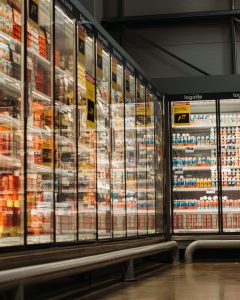
Your typical grocery list would include bottled and jarred packaged goods. You probably haven’t given much thought to it in the past; however, we now live in societies where we are more keenly aware of the impact of our habits on the planet. Convenience and aesthetics aside, the packaging of the food and items we buy have long and short term implications for our finances, family’s health and the world.
While world leaders might have their attention on the UN Climate Change Conference (COP26) in Glasgow, let us for a few minutes focus our attention on bottled and jarred packaged goods that are already in our cupboards and fridges. This article may very well inform your decision about food and items you might consider buying during your next grocery store raid.
A Brief History
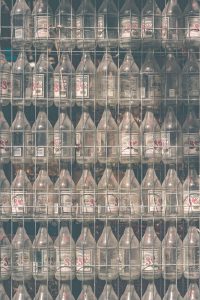
Humans have evolved from being nomadic to being sedentary. This implies that we have stopped drinking and eating at the source over the past thousands of years. Humans no longer drink directly from rivers and no longer only eat where a plant grows. We found it necessary to transport food and water and preserve it for later consumption.
Some of the earliest packaging and storage for food used in prehistoric times include leaves, animal skin, gourds and carved out logs. Fast forward 3,500 years after the elders of Egypt and Mesopotamia first invented glass water containers, and we now have a variety of bottled and jarred packaged goods.
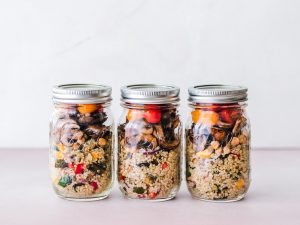
To fully appreciate the benefits and demerits of bottled and jarred packaged goods, it is essential to mention that geographical location, variations in temperatures and the need to overcome logistical challenges in battle also contributed to modern-day packaging. For instance, Napoleon Bonaparte’s chef, Nicholas Apert, helped solve the logistical problems of food by boiling and sealing food in glass bottles. He is credited for the invention of “canning”.
On the other hand, the Inuit tribe of Northern Canada is credited for blessing the world with the idea of Frozen foods. However, the process was modernised through a gentleman by the name of Clarence Birdsey.
Food processing continues to this day, and modern bottled and jarred packaged goods serve a common purpose. The primary objectives are protection, preservation, and presentation. These objectives are essential to the manufacturers and stores. They are equally as important to you and I, the consumers. Whatever your reasons or preference, bottled and jarred packaged goods have several pros and cons you ought to know.
The Advantages of Bottled and Jarred Packaged Goods.
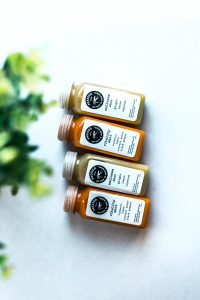
Duration and Shelf Life
Food, pharmaceuticals and other perishable products are items that you often require for future dates. Think of your jams, butter, pickles, cough syrups and those life-saving household consumables we keep in kitchen cupboards. Bottled and jarred packaged goods like these ensure that they remain at their best and safest for long periods. Sealed contents in bottles and jars will remain hygienic and suitable for consumption compared to if they were wrapped or covered at room temperature.
Bottled and jarred packaged goods offer tons of convenience with various shapes, sizes, weights and grips. Thanks to designers’ creativity in the manufacturing industry, kitchens and fridges can be clutter-free with the added benefit of appealing looks. If you are the type not to waste an artistic piece of packaging, then welcome to the club. You belong to the elite league of fans with kitchen envy . . . (are you thinking what I’m thinking? Erm, Taylor Swift’s kitchen?)

Environmental Benefits
Some bottled and jarred packaging lend themselves very well for reuse, which is good for the environment. There is a caveat, though. A significant number of plastic packaging are infamous for the harm caused to the environment. Manufacturers are beginning to recognise the need to reduce the circulation of plastic packaging products. You may see an increase in refillable and reusables on grocery store aisles and local shops.
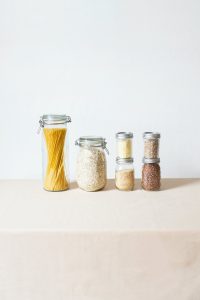
Protection Against Contamination
A lot of bottled and jarred packaged goods are secure and airtight, preventing contamination of their contents. With this comes peace of mind that you can take your favourite beverage or vital medication with you without the fear of spillage or contamination. A lot of medicines are in sealed bottles and jars. Medical science has benefited greatly from the advancement of bottled and jarred packaged goods.
The Disadvantages of Bottled and Jarred Packaged Goods
Despite some glowing and life-saving benefits of some bottled and jarred packaged goods, it is ironic to say the packaging that helps you and I daily also pose a risk to us. Different bottled and jarred packaging materials create various problems, so we cannot generalise and must be specific about the packaging materials at this point.
Harmful Effects on People and Environment
Researchers and environmentalists have identified the single most significant shortcoming of nonbiodegradable bottled and jarred packaging as the waste and pollution they create. As pollutants, they constitute an existential threat to humanity. The biggest culprit here is plastic. Plastic has been said to have all sorts of chemicals and products that are not great for your health and the environment. For example, according to research, polyvinyl chloride (PVC) found in some plastics have been found to contain carcinogens.

Bottled and Jarred packaging made from plastic, when not properly disposed of, also harms marine life. It is estimated that plastic bottles can last up to 450 years. When plastics begin to break down, they are said to produce a lot of microplastics. The microplastic, in turn become poisonous consumption for fishes and other animals in our seas and oceans.
Hazard From Poor Handling
For a blog where families are concerned, it would be remiss not to talk about the potential hazards. Improper handling of bottled and jarred packaging made from glass can pose severe risks. If you want to ensure it serves its purpose of protection, preserving and presenting, glass jars and bottles need to be cleaned regularly. And, with children, you also need to teach them how to handle this particular kind of packing, mainly because they are prone to breaking.
Broken glass injuries are not only limited to lacerations; they can also cause complications and infections. When glass bottles or jars break while holding contents, the entire content is disposed of properly. Don’t attempt to salvage any form of content. The reason is that smaller glass pieces that are not visible. They could cause serious harm to you or your little ones when you touch or consume the content.
A Final Note
So, there you have it. Despite the cons of various bottled and jarred packaging materials, we can’t deny the benefits they also provide. While we continue to grapple with the effects of our lifestyle choices, it would be wise we give careful thought to what we need and what we don’t.

